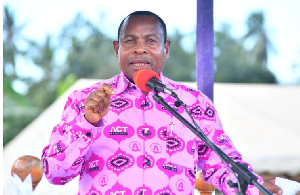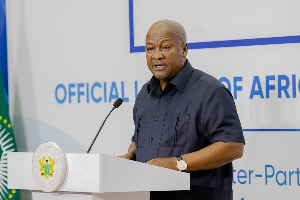The Bank of Ghana’s (BoG) key decision-making body, the monetary policy committee (MPC), will likely keep its main lending rate on hold at 19 percent on Wednesday in order to hold down inflationary pressures.
The 62nd MPC meeting began last Monday and is today expected to announce that its policy rate, which was last increased in July, will remain unchanged.
The MPC in July voted to increase the policy rate from 18 percent to 19 percent to tackle inflation and the cedi’s worsening depreciation.
The 19 percent rate is the highest since February 2004, which sends a signal that monetary policy is nearing the end of its tether in search of solutions to restore economic stability.
Speaking to the B&FT ahead of the central bank’s announcement, some financial analysts predicted that there’s little room for the central bank to cut its key lending rate.
According to Collins Appiah, an economist at NDK Asset Management Limited, an upward adjustment will most likely lead to triggering a further increase in the already high interest rates -- a situation the BoG is most anxious to avoid.
“Though the cedi is relatively stabilised, I don’t see the BoG changing the rate; because if you look at the threat that will come as a result of an increase, it will move the current high interest rate that we have at the moment into another higher level -- and that would probably put the banks or the financial sector at a greater risk level than what’s happening. And with the central bank intention to support the curbing of inflation, I don’t see it increasing the policy rate,” Mr. Appiah said.
Another analyst, Sampson Akligoh who is Managing Director of Investcorp, also backed the central bank to maintain the rate -- arguing that it will take “some time” for stability of the cedi to translate into real sector gains after the distortions it caused, particularly in the first half of the year.
During the first eight months of the year, the local currency depreciated by 29.8 percent against the US dollar on the interbank market, compared to 3.9 percent in the same period last year.
But the cedi found some stability after government secured a US$1billion Eurobond and US$1.7billion cocoa syndicated loan in September, in addition to the announcement of a possible IMF programme.
“My anticipation is that it will take about 3 months for the market to firmly anchor their expectations toward a fairly stable currency in line with historical trends, which requires the MPC to support the recent stability of the cedi during that period.
“It is clear that the ongoing stability of the cedi must synchronise with inflation trends for a more certain outlook on pricing trends,” Mr. Akligoh added.
Mr. Appiah also argues that the recent stability of the currency cannot be said to mean the monetary policy rate is under less pressure, particularly if one is to consider the rising consumer inflation ‘which has crossed a five-year high of 16.5 percent as at September’.
“If the inflation is actually being driven by the demand side, then you should be expecting the policy rate to be adjusted upward; but where I am thinking the inflation is being driven from, is not what the policy rate can work on.
“So, though you might have the cedi being stablised, the policy rate cannot be said to be under less pressure because it has to still work in a way to stabilise other triggers or other economic variables,” he added.
Business News of Wednesday, 12 November 2014
Source: BFT
BoG to maintain policy rate... despite cedi stability



![New IGP, COP Christian Tetteh Yohonu [L] and immediate-past IGP, Dr. Akuffo Dampare New IGP, COP Christian Tetteh Yohonu [L] and immediate-past IGP, Dr. Akuffo Dampare](https://cdn.ghanaweb.com/imagelib/pics/140/14041582.295.jpg)









